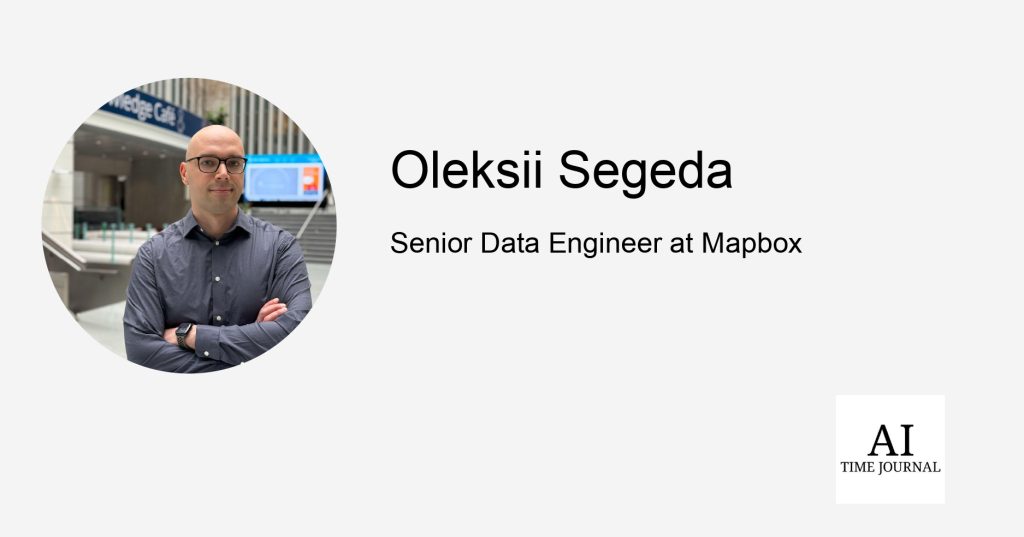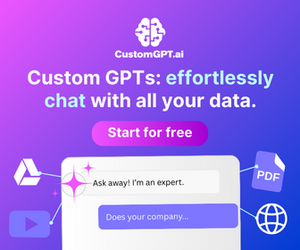[ad_1]

AI technologies are now used in nearly every sector, including mapping and navigation. Oleksii Segeda, Senior Data Engineer at Mapbox, has worked extensively with AI and Big Data for over a decade. In this interview, he shares how he uses these technologies to improve data quality in cartography, attract new clients, reduce operational costs, and build high-performing technical teams — and how others can achieve the same.
Tell us about your professional journey. How did you get into AI, Big Data, and geospatial data? What sparked your interest in mapping and navigation?
I began my IT career at The World Bank as an analyst. I led projects focused on machine learning and Big Data — enterprise search, risk forecasting, and automation of financial transactions. Our efforts paid off: by migrating data sources to the cloud, we significantly reduced operating costs, improved user satisfaction, and even earned recognition from The World Bank Treasury for optimizing internal processes.
I started working deeply with AI and Big Data around 10 years ago, when The World Bank began launching projects that required collecting and analyzing massive datasets. I began experimenting with various ways to visualize these data sets and realized that one of the most intuitive and flexible formats was maps. We interact with maps daily — for weather forecasts, traffic updates, ride-hailing, finding restaurants, and more.
That’s when I knew I wanted to dive deeper into geospatial data. I chose to join one of the leaders in navigation technology — Mapbox. I had used their tools at The World Bank across various projects and was impressed by how easy it was to integrate their solutions. Over time, I gained extensive experience working with their products, which led me to join Mapbox as a Senior Data Engineer.
My main responsibility at Mapbox was to design a new POI (Points of Interest) pipeline to enhance data quality, attract new customers, and prevent churn. I achieved that goal — enabling us to use new data sources, release updates more frequently, and reduce costs. After rolling out the new pipeline, we secured and extended contracts with major clients like Zeekr, BMW, DoorDash, Toyota, and others.
Currently at Mapbox, I focus on processing, normalizing, and preparing POI data for indexing — in other words, if you think of the product as a building, I’m working on the foundation. I also serve on the hiring committee for technical roles and lead the onboarding process for new engineers.
What are the biggest challenges when working with POI data? How difficult is it to build a search system that’s fast, scalable, and accurate?
It’s easier to say what isn’t challenging. Every day, thousands of businesses around the world open or close, and we need to keep that information updated and localized into all major languages. We support approximately 100 countries. Users also want more than just a location — they expect business hours, websites, routes, and parking availability. All of that data needs to be extracted, processed, standardized, and constantly updated.
There are two major stages: data preparation and data indexing for search. In terms of processing, I think Apache Spark and cloud-based solutions built on top of it are the current industry leaders. For the search itself, most companies either build proprietary solutions or heavily customize open-source software. Out-of-the-box search engines generally don’t handle geographic data well, so they’re rarely used as-is.
Most proprietary systems are built with an API layer that handles query parsing, response formatting, authentication, and authorization. Creating such a stack — and fine-tuning search relevance — is a complex task in itself. On top of that, the data fueling the search needs to be pre-processed. In short, POI data work is a highly complex, multi-layered process that requires a tailored approach for every use case.
What kinds of engineering solutions help take context into account, like user preferences, trip type, or time of day, when building search experiences?
When building navigation systems, modern algorithms focus on what users care about most — how quickly they can get from point A to point B. If one provider consistently offers routes that are 30 minutes faster, users will naturally switch. That’s why we’ve developed a number of proprietary solutions that optimize routing using in-house analytics and traffic pattern modeling.
We’ve also built AI-based systems that offer real-time recommendations — for instance, where to stop for food or gas. These interactive suggestions are widely used by end-users, and I believe this kind of contextual, AI-powered experience is the future of navigation.
POI data often comes from external sources. What integration strategies do you use to keep the system robust?
We always validate incoming data — external providers can’t always guarantee accuracy. And since we offer solutions across many verticals, from automotive to weather apps, we bear significant responsibility to our users.
Open data can be especially problematic — vandalism sometimes introduces false information. One of our core objectives is to prevent such inaccuracies from reaching users. If flawed data slips through, it could quickly end up in the media and damage the reputation of our clients.
We also frequently encounter conflicting inputs from multiple sources. One provider says a restaurant is open; another says it’s closed. We’ve built algorithms that help determine which source to trust and what actions to take when data conflicts.
To implement this system, we use AWS Glue as our data processing platform. Our data validation and merging tools are custom-built. I worked closely on their development, OR I facilitated their development, because no existing solutions met our quality standards. For process automation, we rely on Apache Airflow.
You’ve worked in both large institutions like The World Bank and innovative tech companies. What engineering culture principles do you consider universal and essential?
To me, a universal principle is understanding the big picture. Engineers shouldn’t be siloed into their specific tasks without knowing how their work fits into the broader mission. At Mapbox, our collective goal is to create the best product for our users, and I strive to instill that mindset in every person I work with.
The most effective teams, in my experience, are composed of proactive individuals. They anticipate the impact of their decisions, speak up when something goes wrong, and propose solutions.
The hardest part is instilling this mindset in an already established team. What works best in that case is real-world examples from well-known companies, for instance, showing how a large corporation switched from Waterfall to Agile and significantly improved its performance.
If you could build a “product of the future” using POI data and AI, what would it be?
I’m a big fan of augmented reality. I think there’s a real market opportunity for an AR-based navigation product — something like a helmet or smart glasses for couriers that projects the route directly to the exact entrance, floor, or door they need.
This would simplify urban navigation, reduce delivery times, and allow couriers to handle more orders.
We don’t see such solutions widely available yet, but I believe it hold immense potential.
Discover more articles about the author here.
[ad_2]



Leave a Reply